Planning a trip to Rome Italy and want to get off the beaten path? Here’s my guide to discovering all the magnificent hidden gems and secret spots in Rome.
Hidden gems in Rome, you say? Can there be any?
In reality, they’re not that hard to come by. Rome has so many layers, it would take a lifetime to discover it properly.
The Eternal City is one of the world’s most historic and popular places. It’s a magnificent and chaotic tangle of ancient sites and Renaissance splendor. As you stroll through the city, you’re transported to yesteryear, right and left. It can be overwhelming.
In fact, Rome is so densely packed with amazing buildings and museums, most tourists simply can’t get to them all. They’re busy with the main sites — the Colosseum, Palatine Hill, Roman Forum, and the Vatican. If you’re looking for some more unusual things to do in Rome, here’s my guide to ferreting out Rome’s less touristy hidden gems.
Some of these lesser known Roman wonders are overlooked landmarks, underrated museums, glamorous palazzos, or recently unveiled attractions that are still under the radar.
When you’re done admiring Rome’s must see historic landmarks, you can pick one (or a few) of these places and have a secret spot all to yourself. None of them are blighted by mass tourism, interminable queues, or the requirement of skip the line tickets.
40+ Hidden Gems In Rome
Here’s my handpicked list of 43 hidden gems and secret spots in Rome, just waiting to be explored by the discerning traveler or culture vulture.
1. Catacombs of Priscilla
Dating back almost 2,000 years, the Catacombs of Priscilla are a series of catacombs built by early Christians. Known as the “Queen of the Catacombs” since antiquity, the catacombs house the bones of early popes and many Christian martyrs.
The Catacombs of Priscilla are considered one of Rome’s most interesting underground sites, hidden away under Villa Ada Park. After five years of conservation and restoration, the Priscilla Catacombs opened to the public in 2018. Lasers were used to clean the religious frescoes on the walls.
A new function on Google Maps allows you to take a limited tour of the vast complex. You can also see the frescos on this Smarthistory video.
Click here to book your own guided tour fo the catacombs.
Address: Via Salaria 430
2. St. Peter in Chains | Michelangelo’s Moses
Move over David, Michelangelo’s Moses is the sculpture to see. It’s hidden away in Basilica of St. Peter in Chains, an obscure church in the Monti district.
It’s not far from the much more famous Basilica of Santa Marie Maggiore (which you must see for its mosaics). But it boasts something just as unique — Michelangelo sculptures.
In 1505, Pope Julius II, art patron extraordinaire, commissioned Michelangelo to build a three story marble tomb to be placed in St. Peter’s Basilica. Michelangelo slaved away on it for years.
But his work was halted when Julius ordered him to paint the Sistine Chapel at the Vatican instead. When Julius died, funds for the project dried up and Michelangelo never finished it.
READ: Masterpieces of the Vatican
His assistants tried to piece together parts of the tomb. But some of the sculptures disappeared. Michelangelo’s Prisoners are now in the Accademia in Florence and his Slaves are at the Louvre in Paris.
But there’s one especially magnificent sculpture left that’s definitely worth a stop, that of a horned Moses on the bottom level.
Moses has just returned from his meet up with God when he learns that his followers have been worshipping false gods. Though sitting, he’s is full of movement — a characteristic of Michelangelo’s sculpture.
You can book a 2 hour guided tour of both St. Peters in Chains and the secret underground of the Basilica of San Clemente.
Address: Piazza di San Pietro in Vincoli
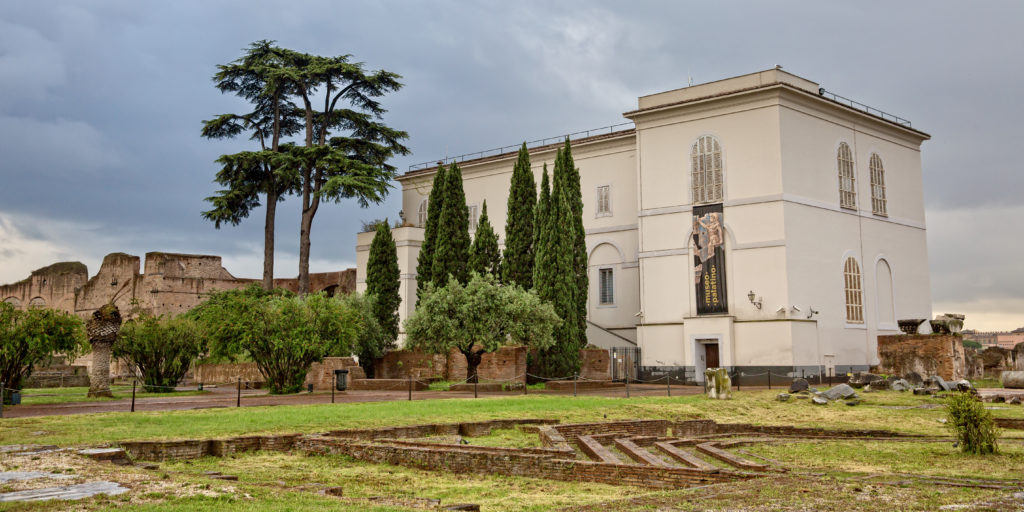
3. Palatine Museum
Many people visiting Rome skip Palatine Hill, which is a mistake. It’s a delightful hidden gem in Rome that’s a treasure trove of ancient Roman ruins.
Or, if they do go, they often just inspect Domitian’s Palace. They don’t walk into the small Palatine Museum.
But this is a wonderful little museum! It contains a wealth of Roman artifacts discovered during excavations on Palatine Hill, from emperors’ palaces and aristocrats’ homes.
You’ll find frescos, sculptures, mosaics, and other objects. If you’re a history buff, the Palatine Museum is a must visit site in Rome.
One of my favorite pieces was a rare bust of Emperor Nero, who reputedly fiddled while Rome burned. All likenesses of Nero were destroyed by decree. This bust is one of the few surviving relics of his time. There’s also an interesting reconstruction of the Hut of Romulus, where Rome’s founder Romulus once lived.
Address: Via di San Gegorio 30 in the Parco archeologico del Colosseo on Palatine Hill
4. Palazzo and Galleria Doria Pamphilj
Another hidden gem in Rome is the magnificent Doria Pamphilj Gallery. The museum is simply a joy to visit, a heady blend of yesteryear in situ art and magnificent architecture. It’s a hidden gem in Rome, housed in a lavish 17th century Roman-Rococo palace.
The art collection was meticulously assembled and is still owned by a powerful Italian family, the Doria Pamphilj (pronounced Pom-fee-lee). The Doria Pamphilj Gallery boasts over 650 works spanning the 15th to the 18th century, including pieces by Velazquez, Raphael, Bernini, Caravaggio, Titian, Carracci, and Bruegel.
The best works are stashed in the Aldobrandini Gallery and the Aldobrandini Hall. The gallery’s emblematic painting is Diego Velazquez’s Portrait of Innocent X, which has a dedicated room. And the museum has a glittering Hall of Mirrors, reminiscent of the Palace of Versailles.
Here’s my complete guide to visiting the Doria Pamphilj Gallery. Click here to book an entrance ticket. Click here to book a guided tour of the stunning palace.
Address: Via del Corso 305
5. Monti Neighborhood
Monti is Rome’s trendiest off the beaten path district. Formerly a slum in ancient Rome, now it’s gentrified. It’s packed with unique shops and hip eateries.
Be sure to get off the main drag and explore Monti’s side streets. If you want to grab a quick lunch, get avocado toast or a panini at Fehu.
Or pick a cute ivy covered cafe, like Aromaticus Monti or La Carbonara, to settle down and relax after your Imperial tour. If it’s gelato you crave, head to Fatamorgana.
Monti has one absolute must see site — the Basilica of Santa Maria Maggiore. Personally, enjoyed it more than St. Peters’ Basilica. It’s less crowded and much older, dating to the 5th century A.D. And it has absolutely breathtaking mosaics in the triumphal arch and nave.
Monti is also an excellent place to go on a guided food tour. To learn more about Monti, you can also book a 2+ hour guided walking tour.
READ: Guide To The Most Beautiful Churches in Rome
6. Palazzo Massimo alle Terme
Palazzo Massimo is a wonderful hidden gem museum in Rome. It’s one of Rome’s newer museum spaces. The museum is next to Rome’s unlovely Termini station in the north. But don’t let that put you off.
Once inside, you’re in a magnificently restored building bursting with a wealth of fine sculptures, mosaics, and frescos. Three galleries on the ground floor are dedicated to busts and statuary from the last years of the Roman Republic. You can see the beautiful, and incredibly detailed, statue of Emperor Augustus.
The other two stand out sculptures are the Sleeping Hermaphrodite and the Discus Thrower, two of the better Roman copies made from Greek originals.
But my favorite part of this little museum is in Room II on the second floor. That rooms houses the exquisite garden frescos that were removed from the House of Livia on Palatine Hill for conservation. Livia was the third wife of Emperor Augustus. Other rooms contain frescos taken from the Villa Farnesina.
Address: Largo di Villa Peretti 2
7. Coppede Neighborhood
The Quartiere Coppede is perfect for a couple hours of aimless strolling with no crowds. If you have a visit planned to the fantastic Borghese Gallery, come here afterward.
Coppede sits between Via Salaria and Via Nomentana. You’ll know you’ve arrived when you spot the dangling black iron outdoor chandelier hanging in an arch on Via Tagliamento.
The Coppede district is known for its fantastical over the top architecture. The area was designed and built by architect Gino Coppede from 1913-27. He used a mix of styles — ancient Greek, Baroque, Art Deco, and Art Nouveau. You may feel like you’ve stepped into a fairytale, it’s so unique and beguiling — an unexpected delight in Rome.
The highlight is the Villino delle Fate, the House of Fairies. The Piazza Mincio also features a whimsical fountain of frogs. The Beatles were rumored to have taken a late night dip in the fountain. If you’d like to dine in Coppede, try Il Gargliano, which specializes in seafood.
You can also book a walking tour of Coppede.
8. Rome Cavalieri Art Collection
A secret art collection is housed in the one of a kind Rome Cavalieri, a 5 star Waldorf Astoria Hotel & Resort. It’s a fantastic private cache of over 10,000 works from the 16th century to present.
Rome Cavalieri is more like a museum that rents rooms than a hotel. Even the lobby has a Tiepolo masterpiece. The hotel has beautiful views over St. Peter’s Basilica and the Vatican. It also boasts Rome’s only Michelin restaurant with three stars.
The must see masterpieces from the collection include the precious Giambattista Tiepolo triptych, Francesco del Cairo’s Judith and Holofernes, Zocce’s sculpture of Minos, and Antonio Tardini’s The Kiss.
If you’re a guest or even just stopping by for a drink or dinner, you can schedule a tour with an in-house art historian. Even if you just step into the hotel lobby, you can see Old Master paintings, rare tapestries, sculptures, and Louis XV furniture.
Address: Via Alberto Cadlolo 101
9. Galleria Sciarra
This little architectural beauty is only minutes away from the Trevi Fountain. The exterior is unremarkable.
But step inside (for free) and your jaw will drop. Its beautiful courtyard is a living museum, transporting visitors back to the height of the Art Nouveau movement.
The wealthy Sciarra family commissioned the opulent courtyard in the late 19th century. Every inch of the arcade walls are adorned with colorful murals painted by Giuseppe Cellini. The theme is the “glorification of women.”
The glass and iron ceiling lets sunlight spill into the courtyard, illuminating the details in the frescoes. When the sun goes down, lights turn on to bathe the courtyard in a warm yellow glow.
Address: Via Marco Minghetti 10
10. Basilica of San Clemente
The Basilica di San Clemente is an 11th century church, built atop a 4th century church. It’s located in Monti, just a short walk from the Colosseum. Inside, you’ll see beautifully frescoed ceilings and original gold mosaics in the apse.
But the real treasures lie beneath the inlaid marble floors. San Clemente is one of Rome’s best underground archaeological sites.
Underground, you’ll find layers of Christian history. There are early Christian wall paintings, a 3rd century pagan temple, a 1st century residence, a secret Mithraic worship site, and the Cloaca Maxima (the sewer system of ancient Rome).
Here’s my complete guide to visiting San Clemente. You can also book a 2.5 hour guided tour of the basilica.
Address: Via Labicana 95. But the entrance is on Via San Giovanni in Laterno.
11. Baths of Caracalla
You’ve likely visited the Baths of Diocletian. But the Baths of Carcalla is a massive complex and one of Rome’s best preserved ancient sites. Click here for a guided tour of the famous baths.
Construction began in 206 AD, under the direction of Emperor Septimius Severus. His son, Caracalla, finished it 10 years later, after killing his brothers to seize exclusive control of the empire.
The baths could accommodate 1600 people. The original brick walls are still standing, a towering shell.
They were once covered in stucco and marble. But that was long ago carried off by looters. The Farnese family also pilfered and excavated the baths.
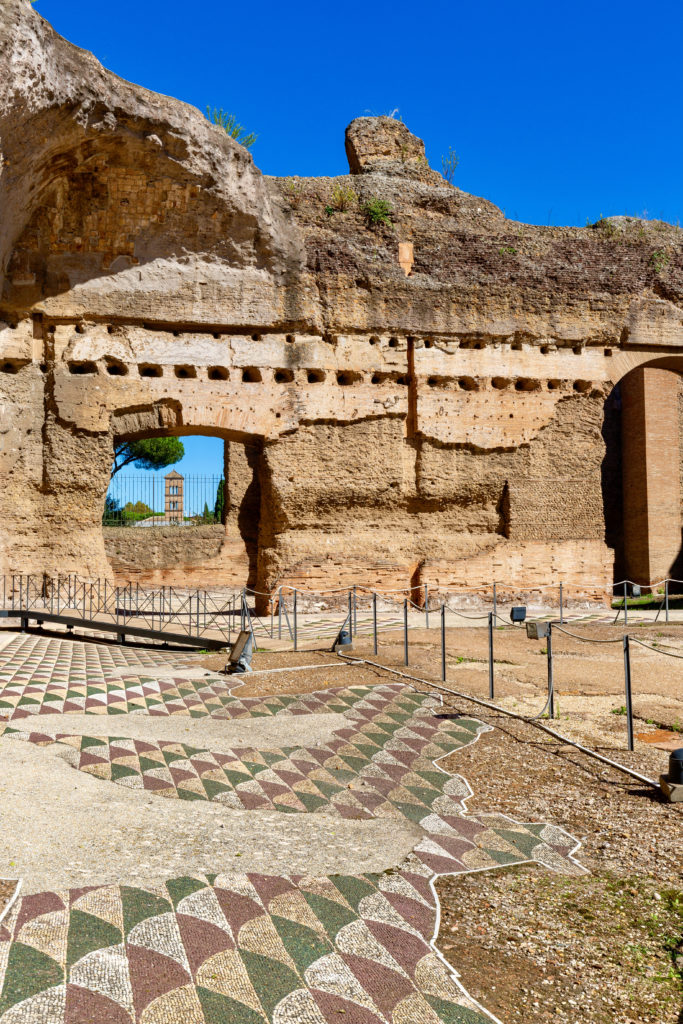
The precious sculptures and mosaics from the Baths of Caracalla have been moved to museums. The famous Belvedere Torso is now in the Vatican Museums.
The Farnese Bull and the Farnese Hercules are in Naple’s Archaeological Museum. Two fountain shaped bathtubs are now in the Piazza Farnese in Rome.
In 2019, the underground tunnels that once heated the baths were opened to the public. It’s not just for academics with torches. This was the technology center of the baths where slaves stoked ovens and tended fires.
For more information, here’s my complete guide to the Baths of Caracalla. Click here to pre-book a ticket. You may also want to book a guided tour.
Address: Viale delle Terme di Caracalla
12. Bramante’s Tempietto
To escape the crowds, I suggest a pleasant walk uphill from the lovely Trastevere neighborhood to the Church of San Pietro in Montorio. This out of the way church once housed Raphael’s Transfiguration before it was moved to the Vatican Museums.
In the church courtyard is a teeny tiny chapel, a church in its own right. It was built on the spot where St. Peter was martyred. It’s a great example of High Renaissance architecture, one of Rome’s only circular churches.
Ferdinand and Isabella of Spain, named the “Catholic King and Queen” by Pope Alexander VI in 1494, commissioned the Tempietto in memory of their son John. They hired famed architect Bramante to build the church and Gian Lorenzo Bernini designed the crypt below it.
The circular temple reinterprets Brunelleschi’s harmonious style. It features Tuscan columns, an ornamental molding with a curved balcony, and a dome. Although one of Rome’s architectural jewels, the Tempietto is an often overlooked and tourist free.
Address: PIaza di S. Pietro in Montorio 2
13. Villa Farnesina
Designed by artist-architect Baldasarre Perruzi, Villa Farnesina is a magnificent hidden gem in Rome’s Trastevere neighborhood. It’s home to torrid love stories and secret Raphael paintings.
READ: Guide To Raphael’s Paintings
The wealthy banker Agostino Chigi built Villa Farnesina, then titled Villa Chigi, from 1506-11. Chigi wanted a show-offy party pad to entertain Roman VIPs.
He created a beautiful space, a Roman pleasure garden, that was bright, airy, and infused with Renaissance beauty.
The villa is decorated with racy mythological frescos by Renaissance painters Raphael, Peruzzi, and Sebastian del Piombo. Check out the Loggia of Cupid and Psyche, the Hall of Galatea, and the Room of the Perspectives.
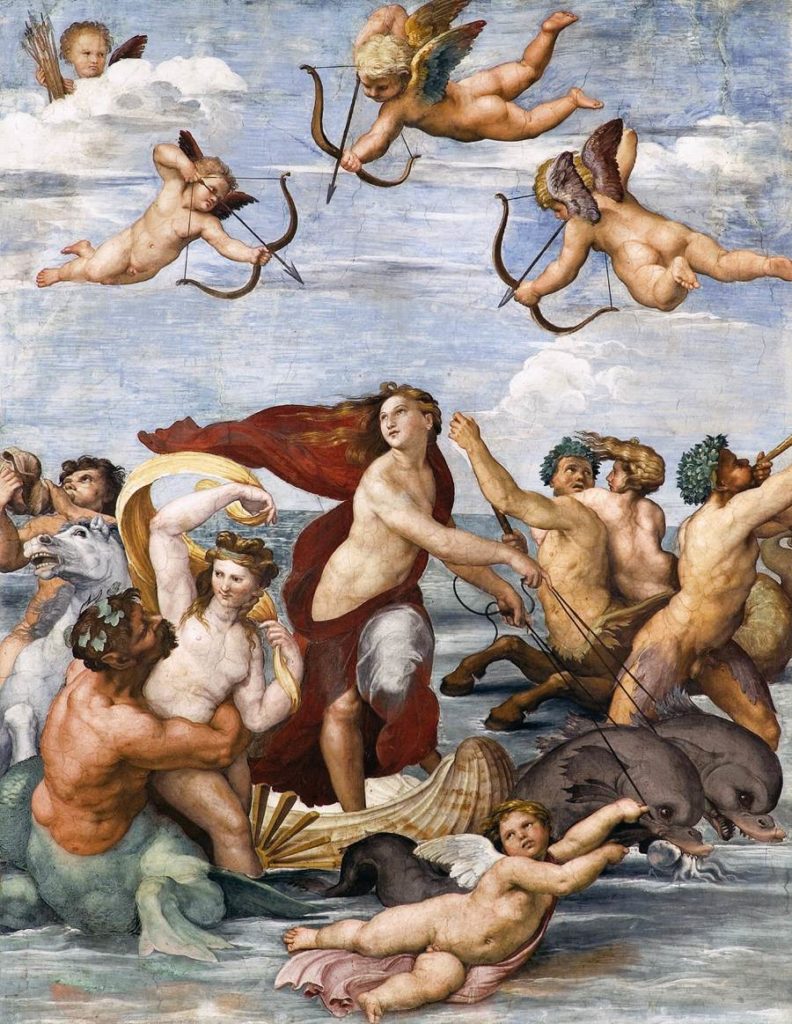
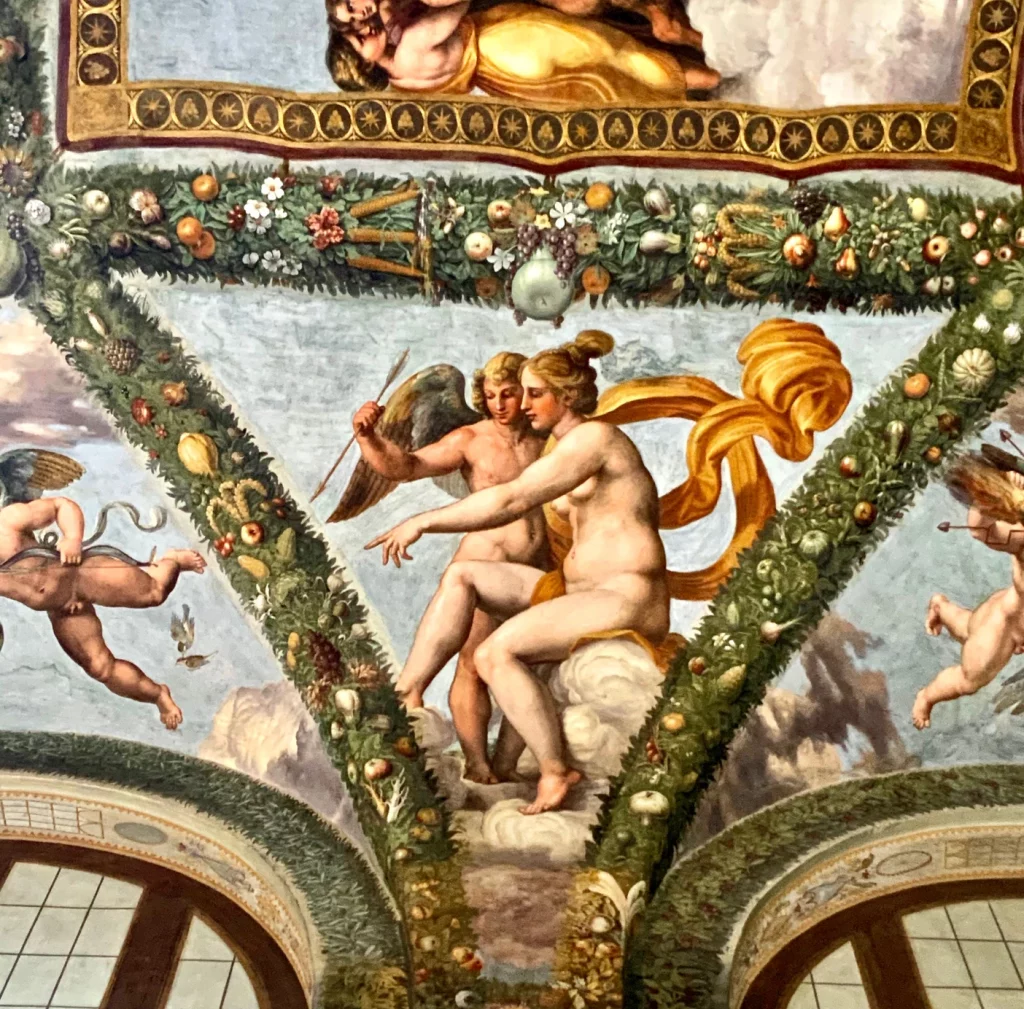
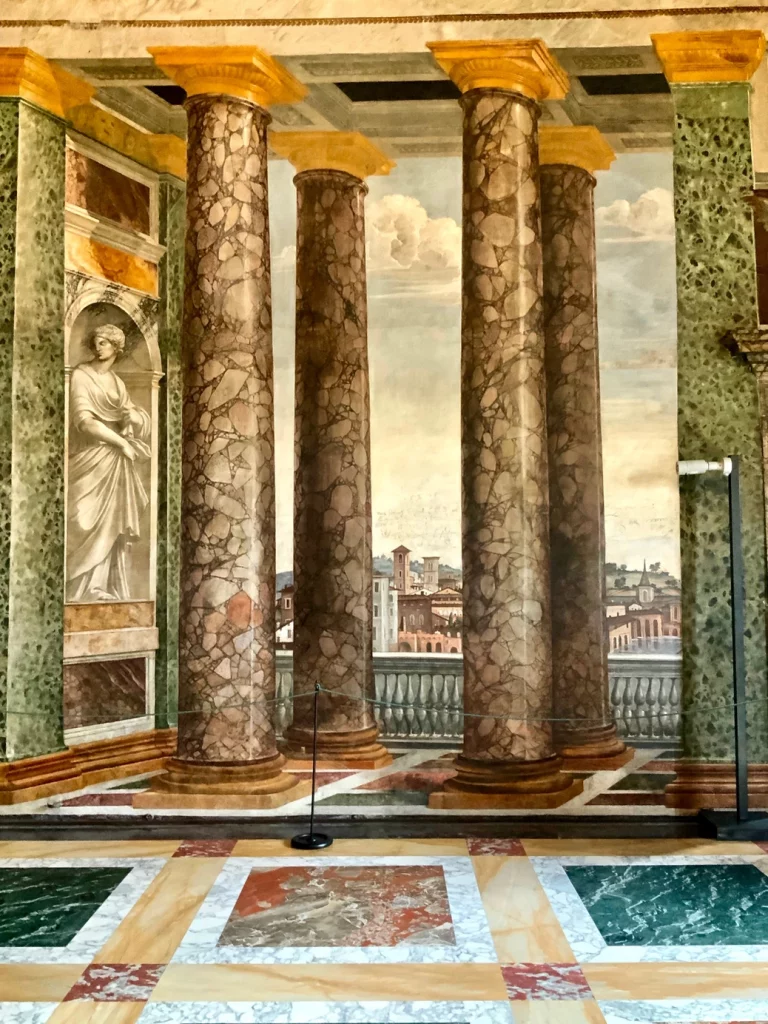
The highlight is the Loggia of Cupid and Psyche, painted by Raphael and his workshop. The beautiful and animated frescos will take your breath away.
Cavorting gods and goddesses cover every inch of the walls. The theme is “love conquers all.” In the next room, the Hall of Galatea, you’ll find Raphael’s famous Triumph of Galatea (above left).
If you want more information on this delightful Roman villa, here’s my complete guide to visiting the Villa Farnesina. Click here for a guided tour of the lovely villa. Click here for a guided walking tour of the villa and the Trastevere neighborhood.
Address: Via della Lungara 230
14. Isola Tibernia
The Isola Tibernia is a tiny picturesque island on the Tiber River, between the Jewish Ghetto district and Trastevere. It’s known as a place of healing and the only island in Rome.
Last time I was in Rome, I stayed in Trastevere. I crossed the bridge above almost every day en route to seeing Rome’s many landmarks.
Ancient legends hold that Rome was once hit by a plague. To attempt its eradication, a delegation was sent to Greece to procure a snake to honor Asclepius the god medicine.
When the delegation returned with the snake in tow, their ship hit Isola Tibernia and sank. The snake survived by curling itself around a tree — a symbol of medicine to this day.
From Isola Tibernia, you’ll have fantastic views of the Tiber River. And there’s a great little restaurant serving up classic Italian food in a rustic setting,
15. Janiculum Terrace
Want to burn off some calories from Rome’s specialty pasta carbonara?
Not far from the Trastevere is a terrace offering stunning views over Rome. It’s a short but steep hike. From it, you can glimpse the Colosseum, St. Peter’s, and the Vittorio Emanuele II Monument.
Janiculum Hill was originally a defensive location. It was the site of an epic battle between between Giuseppe Garibaldi and French troops.
Statues of the battle heros line the path. There’s also a magnificent fountain, called Il Fontanone. It rivals the Trevi Fountain, without the hordes of tourists.
Address: Piazzale Giuseppe Garibaldi
16. Alchemist’s Magic Door
Rome’s Magic Door, or Poreta Alchemica, is well known to Romans. But it’s a hidden gem in Rome that’s easy for tourists to miss.
Hidden in Piazza Vittorio, the Magic Door — a rather esoteric site — is a gateway into the secretive world of 17th century alchemy. It’s one of five remaining doors from the Villa Palombara.
Legend holds that Massimiliano Palombara met an alchemist who claimed he could turn metal into gold with a mysterious herb. Massimiliano hired him. But the next day the alchemist vanished. He left only a few flakes of gold and a “recipe,” with symbols and equations, for the transformation.
Massimiliano posted an engraving of the recipe above the door, hoping someone would crack the code. But no one has deciphered its meaning.
Address: Piazza Vittorio Emanuele II
17. Palazzo Spada’s Borromini Perspective Gallery
Palazzo Spada is another hidden gem in Rome, located just a few minutes from Campo de’ Fiori.
The Renaissance palazzo is named after Cardinal Spada, who purchased the palace in 1632. He hired the architect Borromini and beautifully transformed the building.
The palazzo’s small art gallery consists of four rooms filled with 16th and 17th century work by Caravaggio, Reubens, and Titian. There are also some rare works by the female star of the Baroque, Artemisia Gentileschi.
But the museum’s real highlight is the internal garden courtyard, where Borromini created a forced perspective trick or optical illusion. The long corridor of columns seems endless.
But it’s really only 28 feet in length. A towering sculpture appears at the end, but that’s only 23 inches high.
For more information, here’s my complete guide to visiting Palazzo Spada.
Address: Piazza Campo di Ferro 13
18. Palazzo Barberini | Galleria Nazionale d’Arte Antica
Palazzo Barberini is a very underrated museum in Rome. But it’s definitely an art lover’s art gallery.
Recent restorations give it an unapologetically grand wow factor. And the museum holds some of Europe’s classic paintings by the great masters.
The Barberini Palace is 12,000 square meters and has 187 rooms. It has beautiful staircases by architects Borromini and Bernini.
The palace is home to one of Raphael’s most famous paintings, La Fornarina. It’s a painting of the “baker’s daughter,” whom Raphael had fallen in love with while fresco painting in the Villa Farnesina.
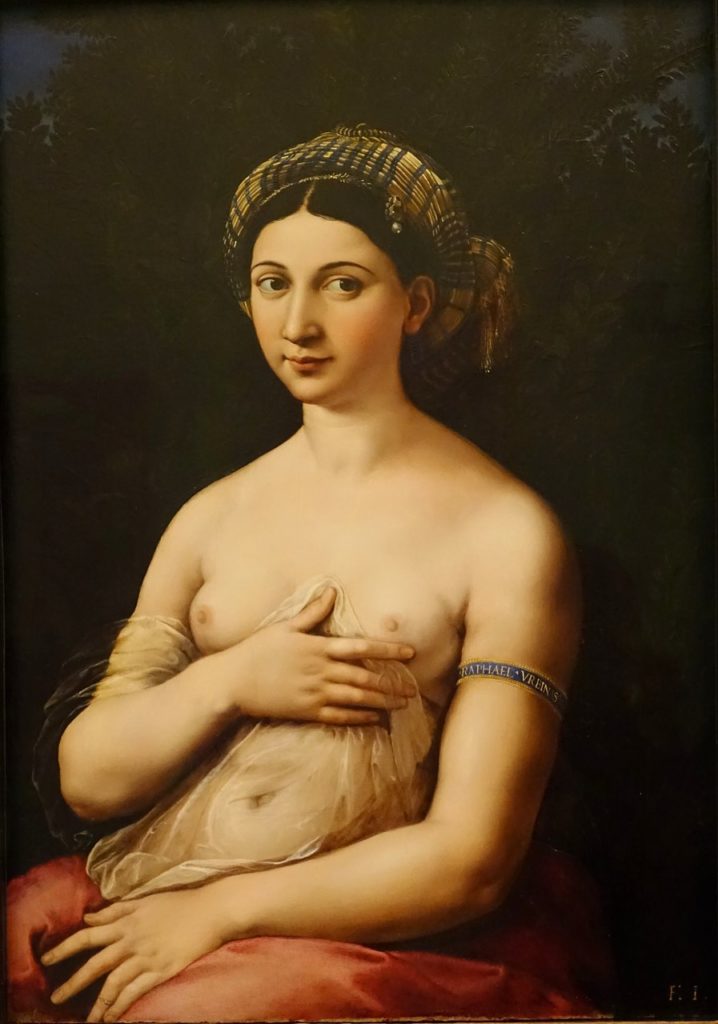
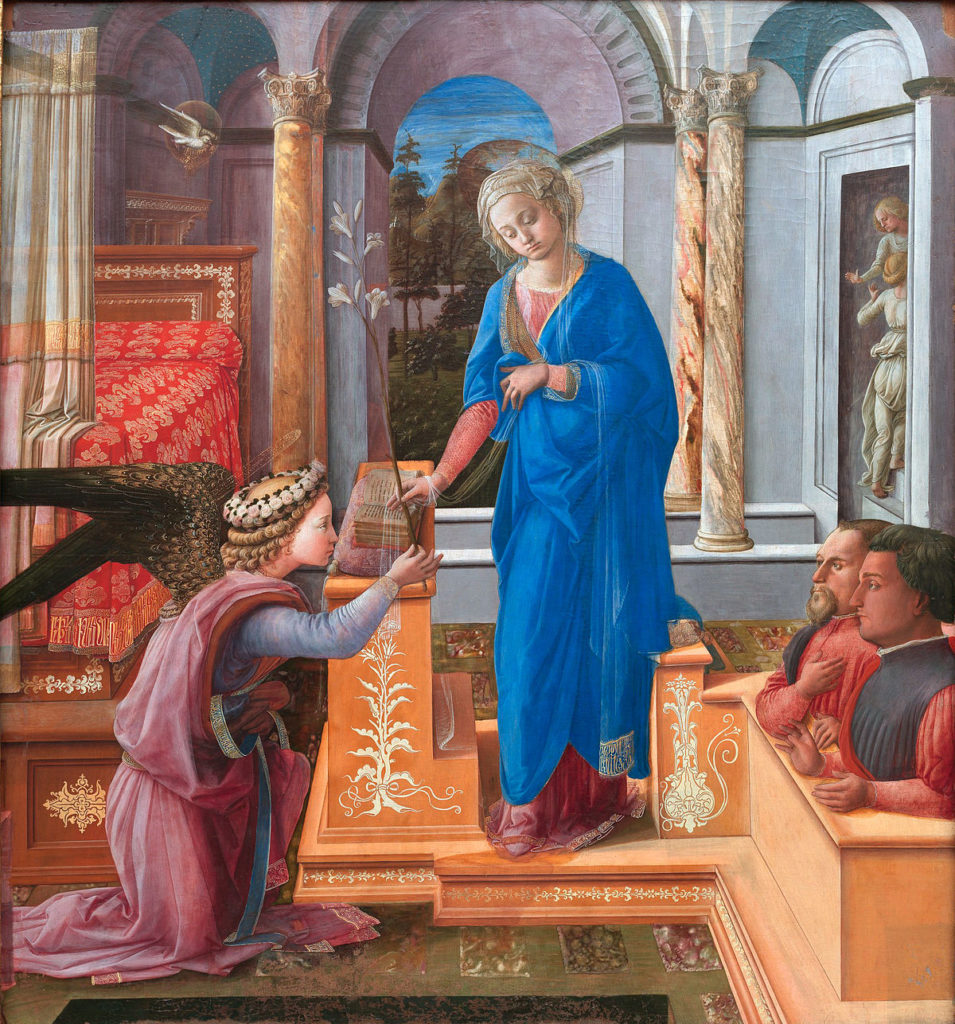
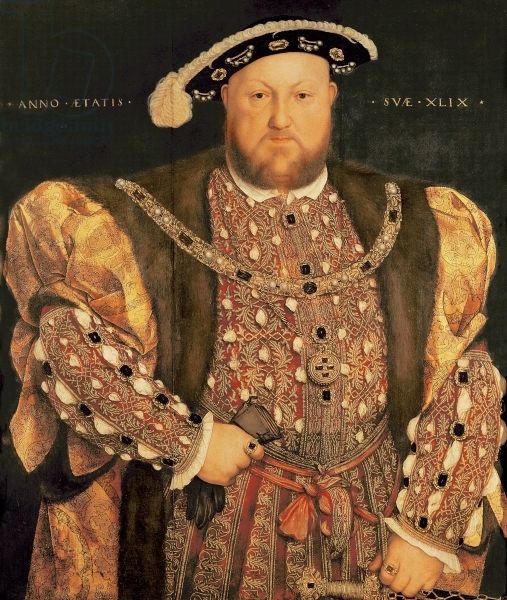
Other master works include Caravaggio’s Narcissus and Judith and Holofernes, Holbein’s Henry VIII, and the ceiling fresco by Pietro da Cortona.
Though the painting is not very well preserved, I fell for Baroque painter Artemisia Gentileschi and her beautiful Self Portrait. I had just listened to an Art Curious podcast about her famous painting Judith Beheading Holofernes, which is in the Uffizi Gallery in Florence.
She survived a rape by her tutor. After a move to Florence, she flourished and was the first woman admitted to the Accademia.
Here’s my complete guide to the Palazzo Barberini. Click here for a skip the line entrance ticket. Click here for a 2 hour guided tour of the museum or here for a private tour.
Address: Via delle Quattro Fontane 13
19. Villa Giulia | National Etruscan Museum
If you want an overlooked and empty museum, this is it! The Museo Nazionale Etrusco di Villa Giuli, housed in the Villa Giulia, is true Rome hidden gem. It’s just a short stroll from the Borghese Gallery, so you could combine the two museums.
The villa was built by Julius III as a pleasure pad escape. Several architects were involved, with Michelangelo lending design advice.
If you have a passion for ancient Rome or the Etruscans, who lived around 600 B.C., this museum is for you. The collection is the greatest of its type in the world.
Highlights include exquisite pieces of gold jewelry, the sarcophagus of the spouses (identical to the one in the Louvre), and the Pyrgi Tablets. There’s a reconstructed Etruscan temple in the villa gardens.
If you are a fan of Etruscan history, click here to book a guided tour of this specialty museum.
Address: Piazzale di Villa Giulia 9
20. Teatro Marcello
Located in the Jewish Ghetto neighborhood of Rome, the Theater of Marcellus is easily overlooked by most tourists. But I walked past it everyday on the way home to my Air Bnb in Trastevere on my last visit.
The monument isn’t far from the gigantic white Monument of Victor Emanuel. And it looks like a mini-Colosseum.
The Theater of Marcellus is truly ancient. Julius Caesar launched construction and his heir Augustus inaugurated it in 12 BC. It could seat 20,0000. As you walk around it, you’ll see both Doric and Ionic columns. There are ruins piled up all around it.
Unfortunately, you can only admire the exterior and walk along the amphitheater edge. In the 4th century BC, the theater started to crumble. Thereafter, it was used as a stone quarry and repurposed, like so much else, for other buildings in Rome.
Today, the Theater of Marcellus is a building that’s half private and half public. If you look at the photo, you’ll see luxury apartments lining the top. In the summer, there are sometimes concerts outside.
Address: Via del Teatro di Marcello
21. Houses of Augustus and Livia
The home of Rome’s first emperor, Augustus, is located on the most sacred area of the Palatine Hill, next to the Temple of Apollo. The House of Augustus was modest by imperial standards, especially given Augustus’ enormous wealth.
The House of Augustus is nonetheless celebrated for its lavish red Pompeian frescoes. They were first unveiled to the public in 2014, the 2,000 year anniversary of Augustus’ death, after years of restoration.
The most exquisite frescos are in the Pine Room, the Room of the Masks, and the Room of the Perspective Paintings — so named for their recurring motifs.
If you book a special S.U.P.E.R. ticket to see the House of Augustus, you’ll also see the House of Livia, Augustus’ third wife.
First excavated in 1839, Livia’s House was attributed to her because Livia’s honorific name was found stamped on a lead pipe. Built in the first century BC, Livia’s house was actually a bit larger and grander than her husband’s house.
The best preserved section is the atrium and three adjoining rooms. The central room (the tablinum) was the most richly decorated. Known as the Room of Polyphemus, it had mythological frescos showing Mercury kidnapping the nymph Io.
In the dining room, there was a stunning garden fresco that made the walls almost disappear. The fresco has flowering trees, blossoms, and flying birds in delicate shades of faded purple, blue, yellow, and white.
The original of this fresco was moved to the Palazzo Massimo all Terme museum. An replica is now in the House of Livia.
22. Nero’s Golden House, Domus Aurea
Nero’s Golden House was once the grandest building on earth. It’s not your typical Roman tourist site, and is a seriously overlooked hidden gem in Rome. Domus Aurea is an excavation in progress, one of Rome’s best archaeological sites.
Built by Emperor Nero between 64-68 AD in the heart of imperial Rome, the sprawling property once covered up to 300 acres. The facade and walls were adorned with frescos, gold leaf, glass mosaics, pearls, and marble. In natural light, it had a golden hue.
But little of this wealth survived Nero’s rule. As Nero’s extravagance and tyranny spun out of control, rivals condemned both his reign and his emblematic palace.
For a decade after his death, the palace was looted, destroyed, and filled in with brick. But the vivid frescos by the artist Famulus couldn’t be pried off the walls.
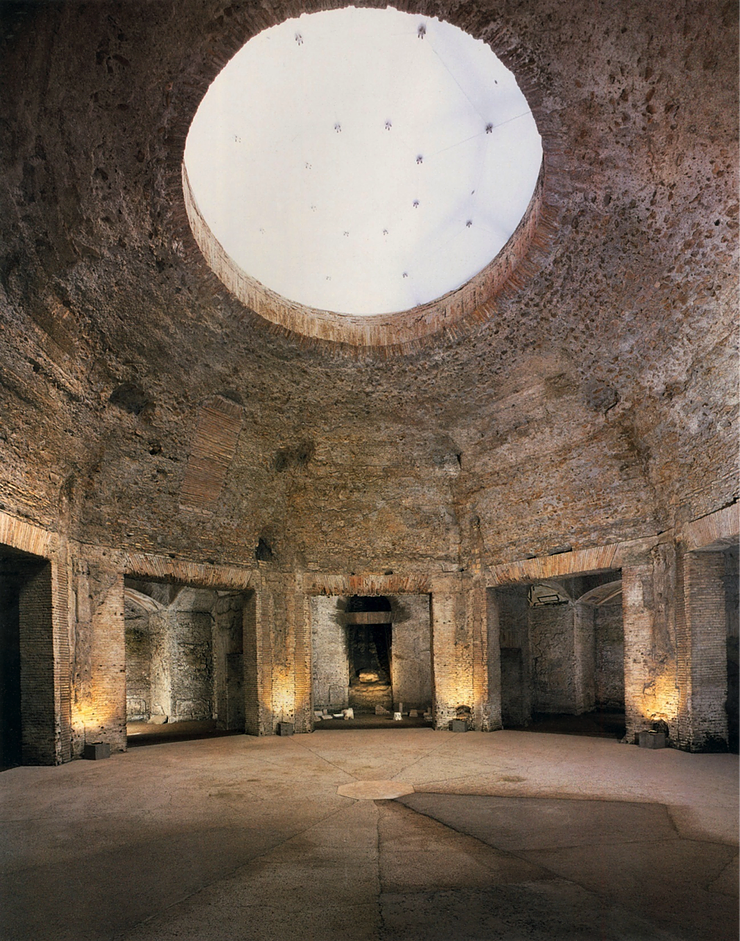
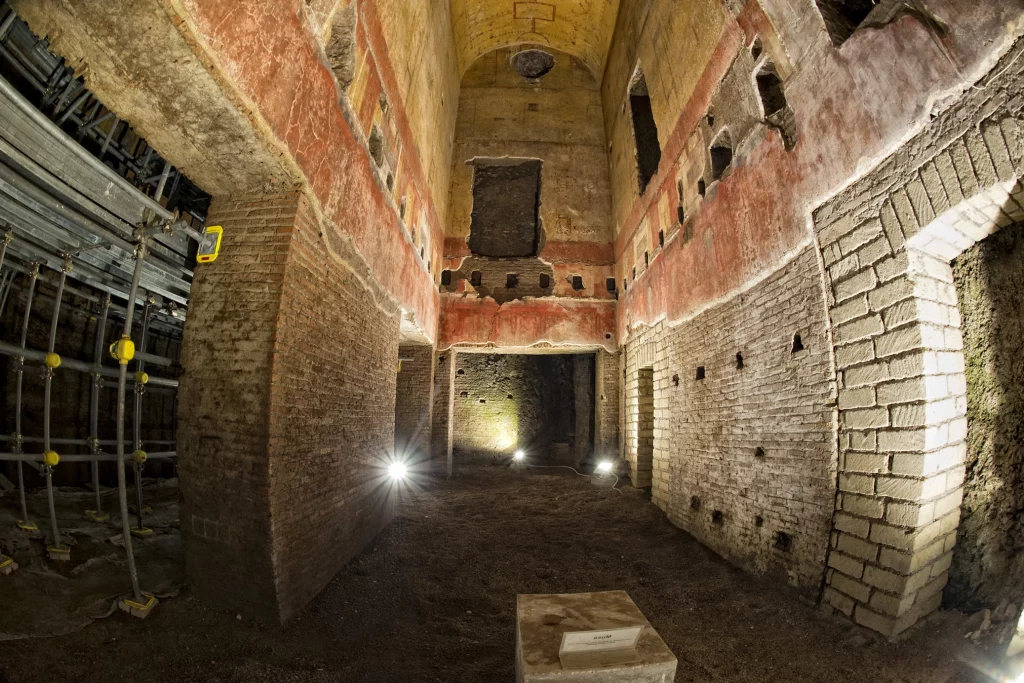
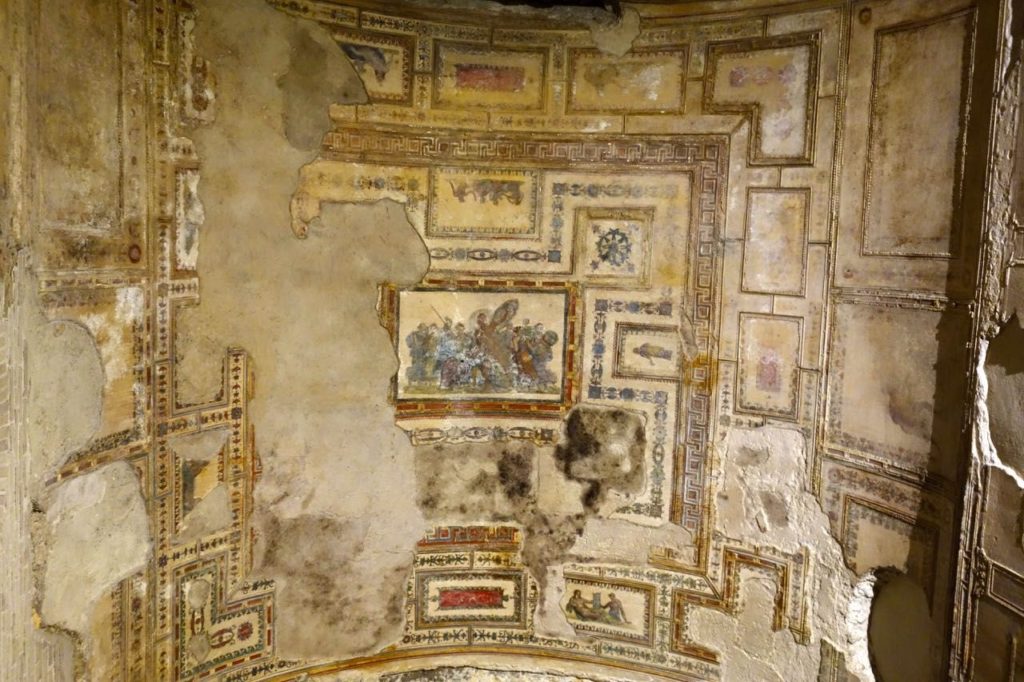
At the end of the 15th century, the Domus Aurea was discovered by accident when a young man fell into a crevice. To his surprise, he found himself surrounded by paintings.
At first, the palace ruins were thought to be caves or grottos. Artists like Michelangelo and Raphael flocked to see the ancient frescos, now called grotesques.
In the 18th century, proper excavation of the Golden House began. Now, you can visit (with a hard hat) on the weekends. The crown jewel is the Octagonal Room, which represented a revolution in architectural style and technique.
Here’s my compete guide to Domus Aurea. You may want to book a 2+ hour guided tour to explore it properly.
Address: Via della Domus Aurea 1
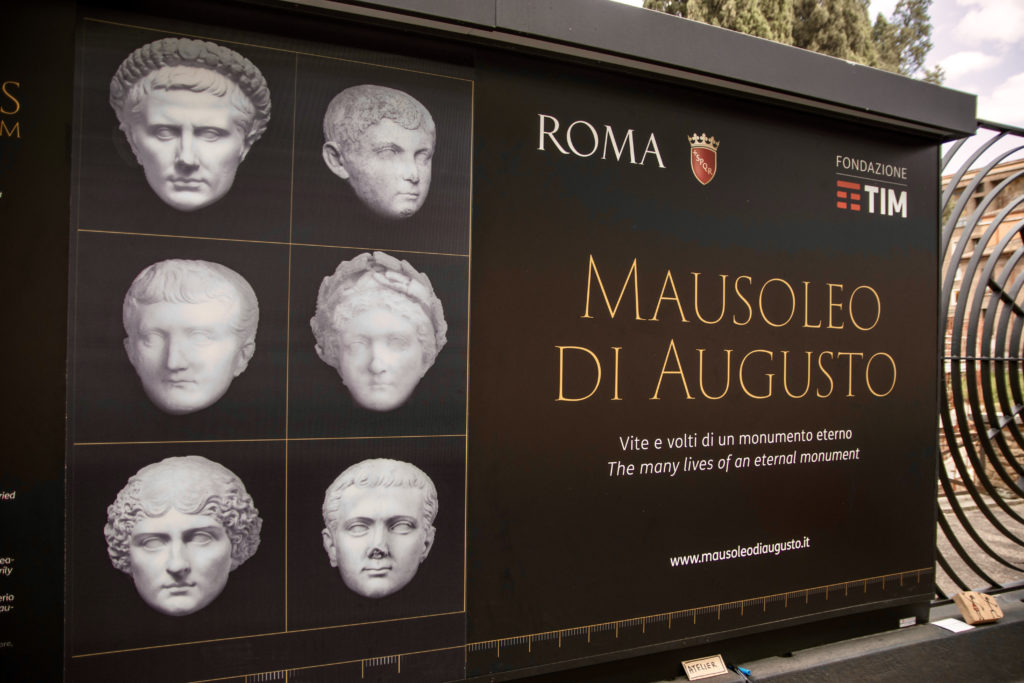
23. Augustus’ Mausoleum: Family Tomb of Julio-Claudian Dynasty
Augustus’ Mausoleum is the family tomb of Rome’s first emperor. Augustus ruled between 63 BC and 14 AD and was the great nephew and heir of Julius Caesar.
His mausoleum was built around 28 BC after the Battle of Actium. It was inspired by the mausoleum of Alexander the Great in Egypt.
The mausoleum was a burial place for Augustus, his wife Livia, and the other Julio-Claudian emperors. Not much has survived from its former grandeur and it’s original appearance is unknown.
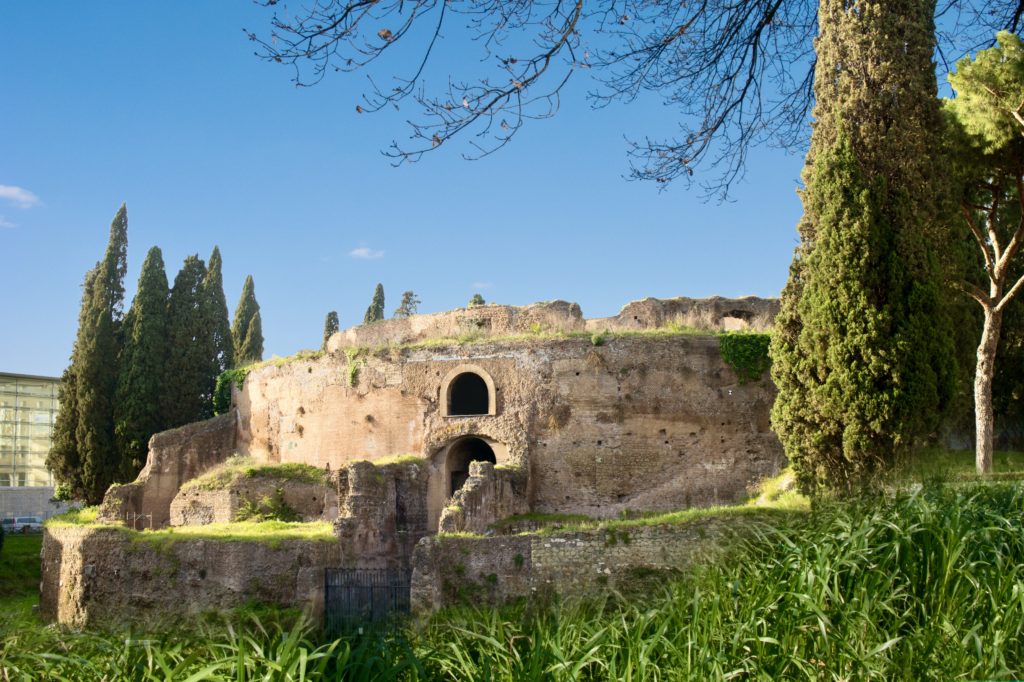
Although it was in ruinous condition, a 6.5 million euro restoration began in 2016 and was only recently finished. 50% of the structure is long gone — pillaged and destroyed.
The renovated monument opened in March 2021, and is still a hidden gem in Rome. There’s a 3D experience, much like Domus Aurea.
Click here to pre-book an entrance ticket. Click here for skip the line tickets for both the mausoleum and the Ara Pacis museum dedicated to Augustus.
Address: Piazza Augusto Imperatore
24. Domus Transitoria, Nero’s First Palace
Before there was Domus Aurea, there was Domus Transitoria. Nero’s first palace was built between 60 and 64 BC.
The palace had a short life. It was destroyed in the great fire of Rome in 64 BC.
Like Domus Aurea, Domus Transitoria was a massive and lavishly decorated palace, connecting the Palatine Hill and Esquiline Hill. It was dubbed the Transit House. According to Seutonius, Domus Transitoria was characterized by all the pomp, gold, and luxury one typically associates with grandiose Neronian architecture.
Domus Transitoria was just opened in April 2019. You can only visit it with a S.U.P.E.R pass. You enter and descend a staircase to inspect the site underground.
Virtual reality headsets bring the dank place to life, allowing visitors to see vignettes of the palace in its former glory. You can take this YouTube virtual tour to see the ruins and a glimpse of what the palace looked like in ancient Rome.
Address: just to the right of the entrance to the Palatine Museum on Palatine Hill
25. Santa Maria in Trastevere
Santa Maria in Trastevere is one of Rome’s oldest churches, built circa 350 AD. It was Rome’s first church dedicated to the Virgin Mary.
In the 12th century, Pope Innocent II, a native of Trastevere, rebuilt the church. Like Santa Maria Maggiore, it boasts impressive mosaics from the 12th and 13th centuries.
Two rows of 22 large columns lead up to the nave. The apse in the main altar is covered in gilded Byzantine style mosaics. Be sure to look for the 6 panels known as The Life of the Virgin. There’s also a 13th century mosaic floor with elaborate interlacing patterns.
Trastevere is one of Rome’s beautiful neighborhoods. You may want to book a 3 hour guided walking tour.
Address: Piazza di Santa Maria in Trastevere
26. Capuchin Crypt
If you want a spooky experience, head to the Capuchin Crypt. Located near the Piazza Barberini, the crypt is a series of small chapels beneath the Capuchin Church of the Immaculate Conception.
Dating back to 1645, this crypt a holds the bones and mummified remains of around 4000 Franciscan monks. You’ll come face to face with the dead, an intentional reminder of our short time on earth.
The five tiny rooms are given evocative names — the Crypt of Skulls, the Crypt of Pelvises, the Crypt of the Leg Bones and Thigh Bones. Some of the bones are set into rather macabre (maybe outright gross) patterns.
A visit to the crypt includes a visit to the Museum of the Capuchin Order. The museum houses a painting attributed to Caravaggio, St. Francis in Meditation.
Click here for a skip the line ticket and guided tour of the crypt.
Address: Via Vittorio Veneto 27
27. Museum of the Altar of Peace | Ara Pacis Museum
The Roman Senate commissioned the Ara Pacis, or Altar of Peace, in 13 BC. The altar was built to honor soon-to-be emperor Augustus.
He had just pacified and defeated the barbarians. His victory marked the beginning of the Pax Romana, a 200 year golden age where arts and architecture flourished.
READ: History of the Roman Emperors
The altar was once part of a large complex. It was moved to its current location in 1938. The Ara Pacis Museum opened in 2006 and is dedicated to this single monument.
The museum is housed in a modern pavilion designed by American architect Richard Meier. If you don’t want to pony up the rather outrageous entry fee, you can admire the ornate altar through the windows or take the museum’s virtual tour here.
But if you do want to go inside, click here to book a skip the line ticket for the museum. The ticket also includes entry to Augustus’ Mausoleum.
Address: Lungotevere in Augusta
28. Grave of Julius Caesar
There’s only one place in the Roman Forum where you’ll find fresh flowers every day — at the grave of Rome’s most famous citizen, Julius Caesar in the Roman Forum.
The temple was built to honor Caesar and safeguard the altar containing his ashes. The temple is an unimpressive ruin. But it doesn’t matter. Caesar’s grave is still a popular, if obscure, place of pilgrimage. You likely won’t see it unless you’re on a guided tour.
Behind the columns of the Temple of Vesta and the Temple of Castor and Pollus, you’ll see a small metal roof and a piece of stone wall. That’s where you’ll find all that remains of the Temple of Caesar.
The stone is from the base that supported the orators’ platforms. Under the roof, you’ll see what looks like a pile of rocks and dirt. That’s the remains of the altar the Senate placed in front of the temple, which contained Caesar’s ashes.
Here’s my complete guide to Caesar and his grave.
Address: Via della Salara Vecchia in the Roman Forum
29. Church of Saint Agnes | Chiesa di Sant’Agnese in Agone
Borromini was an Italian architect who helped launch Roman Baroque architecture.
Borromini’s works combine classicism with passion. His buildings seem restlessly alive and were sensational at the time. His used concave and convex forms to animate his buildings and eschewed over-decoration.
Borromini was eccentric man, who some thought psychotic in his last years. He was an intense and embattled loner. He was rancorous and quick tempered. Borromini eventually committed suicide by falling on his own sword at age 67.
Sant’Agnese Church in the Piazza Navona is one of his best works. Everyone goes to Piazza Navona and admires the striking concave facade. Most people don’t step inside the church. Do it, it’s free!
READ: Walking Tour of Central Rome
The church is dedicated to the martyr St. Agnese. She was killed during Diocletian’s persecution of Christians.
Pink and white marble covers the walls. The bright and simple interior is filled with Baroque statues. Beautiful frescos decorate the dome.
Address: Via di Santa Maria dell’Anima in the Piazza Navona
30. Michelangelo’s Porta Pia
Pope Pius IV commissioned Michelangelo to design this city gate in the Aurelian Way. It was Michelangelo’s last architectural project. He died shortly before it was completed.
The pontiff wished to burnish his legacy with a gate sporting his name. Built in 1551-56, the crenellated gate is focused more on the city of Rome, than on those entering the gate.
In building Porta Pia, Michelangelo departed from architectural norms, particular the “Virtruvian Rules.” The gate has an eccentric secular design with fantastical elements of Michelangelo’s architectural vocabulary – broken pediments, swags, masks, displaced fragments of the orders, overlapping planes, and juxtaposed facades.
A bronze plaque shows the artist’s original plan, which was significantly altered (by Michelangelo and others) in the final version.
Address: Porta Pia
31. Michelangelo’s Santa Maria degli Angeli e dei Martiri
The Basilica of St. Mary of the Anglels is a fascinating church with a facade made of Roman ruins. It’s a fragment of the frigidarium, or cold pool room, from the ancient Baths of Diocletian.
In 1560, Pope Pius IV commissioned Michelangelo to transform the bath ruins into a church. It was to be his final work.
Romans took their baths seriously. Diocletian’s Baths were meant to surpass the Baths of Caracalla and could accommodate 3,000 citizens. Stepping inside Michelangelo-designed church gives you an idea of their scale.
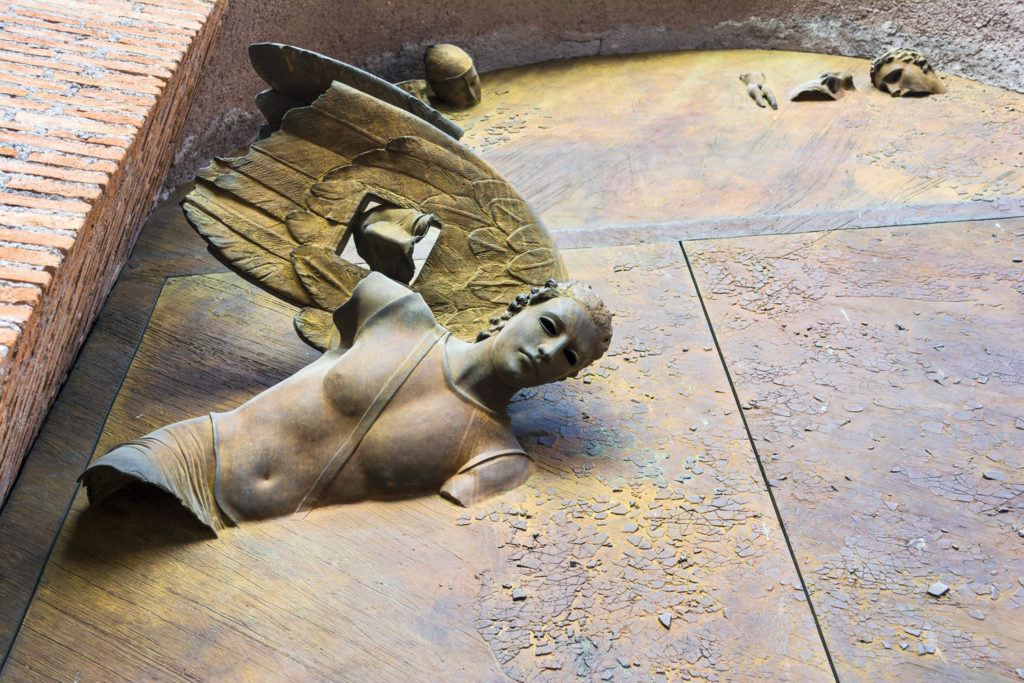
The basilica is the only Renaissance style church in Rome. The sensational interior contrasts sharply with the facade, which Michelangelo intentionally left unadorned except for bronze doors. The nave boasts massive granite columns, some from the Roman era and some imitations.
The church is also home to the Meridian of Rome. It was created in 1702 by an astronomer and placed on the church floor in the right transept.
Until 1846, Romans used it to set the time. An opening in the church’s roof causes sunlight to fall on the line precisely at noon.
READ: Guide To Ruins in Rome
Address: Piazza della Republica
32. St. Luigi dei Francesi | Church of St. Louis of the French
San Luigi dei Francesi, or St. Louis of the French, is a small church just one block from Piazza Navona. This hidden gem in Rome is absolutely worth a stop, especially if you’re on the Caravaggio trail in Rome. Inside is the spectacular Contarelli Chapel.
The chapel houses an in situ triptych about the life of St. Matthew by Baroque master Caravaggio. (In situ just means the art is shown in the host site for which it was created.) The three paintings, which are all massive, are:
- The Calling of St. Matthew (1599-1600)
- The Martyrdom of St. Matthew (1600-1601)
- St. Matthew and the Angel (1602)
You can see the paintings up close and personal under perfect lighting conditions. In each one, a seemingly regular person is caught in a dramatic moment.
If, like me, you’re a fan of Caravaggio, you can book a 3 hour art tour of his masterpieces in Rome.
Address: Piazza di S. Luigi de’ Francesi
33. The Magistral Villa of the Knights of Malta
The Knights of Malta are a religious and military order, pre-datings the Crusades, which has held this Aventine Hill since the 14th century. The complex of buildings serves as the order’s embassy in Rome.
In the mid-18th century, Piranesi, a trained architect, completed his only major architectural commission and dramatically remade the site.
The highlight is the compound’s church, Santa Maria del Priorato, an all-white panoply of visual symbols and styles that breathes life into Rome’s ancient origins, especially the Etruscan period. The church serves as a backdrop for one of the city’s most spectacular views.
A doorway contains a famous keyhole that shows a vista stretching all the way to St. Peter’s. Tourists often line up outside to have a peek.
Once inside, you can surprise the crowds by peeking back. Don’t let the view distract you from the secluded garden, dominated by a giant cedar of Lebanon, presented to the knights by a Bavarian king.
Address: Via Condotti, 68
Pro tip: Access via appointment only. Arrange tours through the Flumen Cultural Association: info@flumen.it
34. Palazzo Colonna
Palazzo Colonna is in the heart of Rome near Piazza Venezia at the top of the Roman Forum. You leave the hurly burly of central Rome and disappear into a a Renaissance-Baroque hidden gem in Rome.
Built beginning in the 13th century, the Colonna family let the money flow. The resulting effect is a beautiful and lavish assemblage of Medieval, Renaissance, Baroque, and Roman Rococo art and architecture.
To top it off, it’s done in unfailing good taste and beautiful preserved, with the family’s personal objects still in place.
Aside from all the gilding, this Baroque jewel has many wonders to explore — a terrific art collection, stunning frescoed ceilings and walls, the extravagant private apartments of Princess Isabelle, and the Pio Pavilion.
READ: Complete Guide to Palazzo Colonna
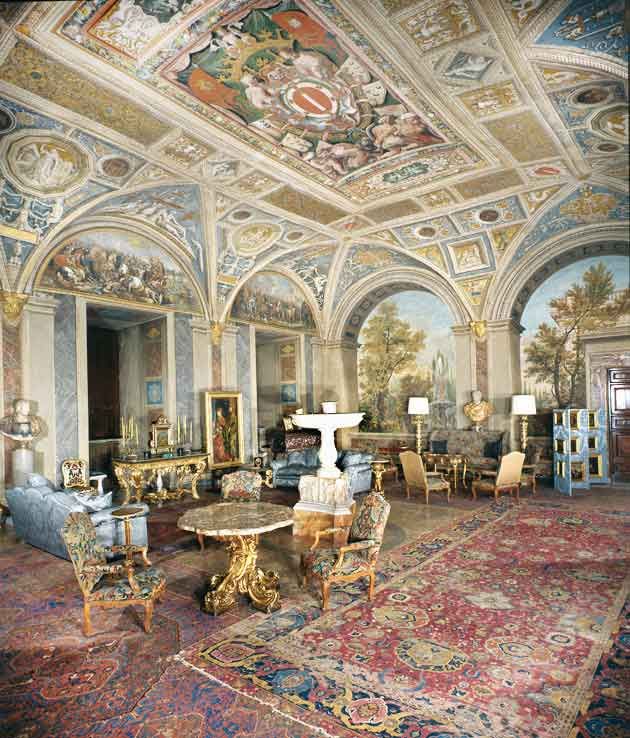
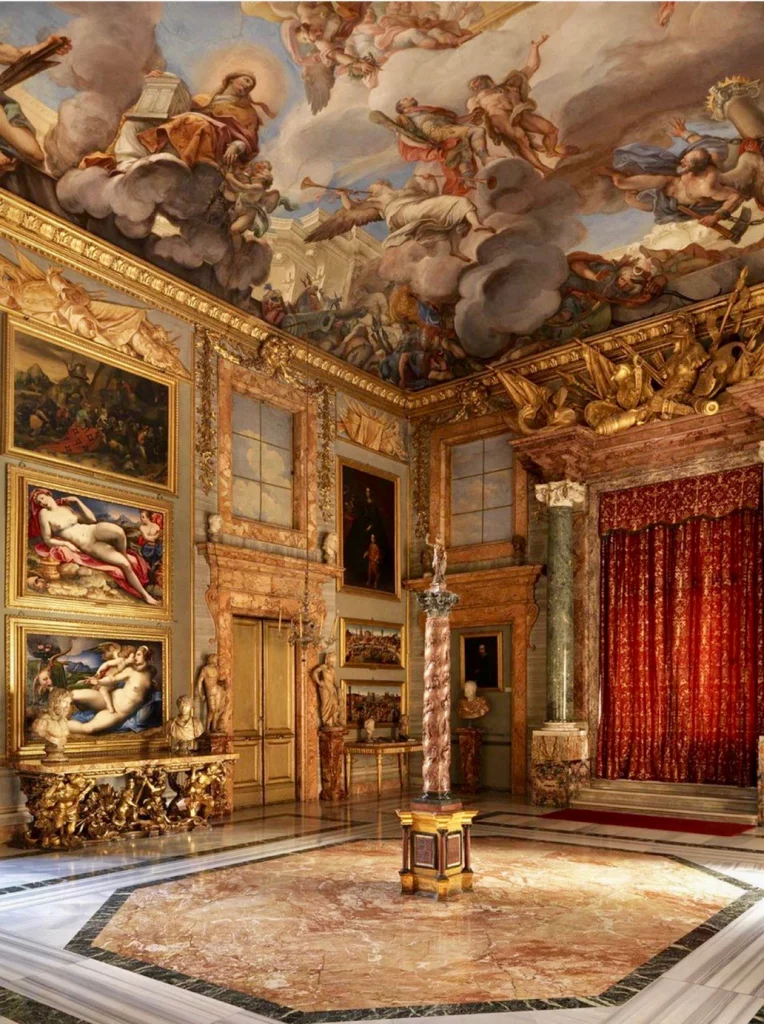
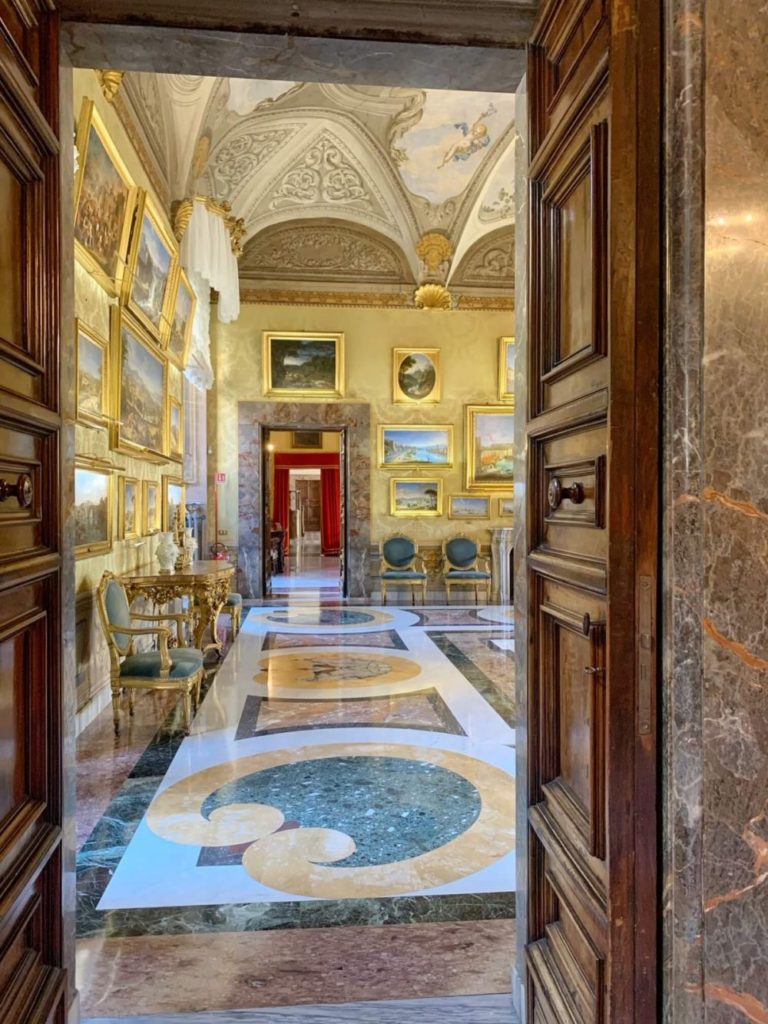
The palace rooms boast multi-colored marble floors, authentic period furniture, lavish tapestries, and intricate crystal chandeliers. The walls of the entire residence are covered with Old Master artworks by Pinturicchio, Carracci, Guido Reni, Tintoretto, Salvator Rosa, Bronzino, Guercino, Veronese, Vanvitelli, and many others.
While there are many rooms, the four main highlights of the Colonna Gallery are: The Great Hall, The Blue Room, The Hall of the Battle Column, and The Hall of the Landscapes.
The most magnificent room is the Great Hall. It’s a Versailles-like gem, akin to the famous Hall of Mirrors but even longer. It stuns with sculptures, mirrors, and 270 paintings set in golden frames. The ceiling fresco depicts The Battle of Leptano.
You can book a 1-3 hour guided tour of the opulent palace.
Address: Entrance on Via della Pilotta, 17
35. House of the Knights of Rhodes
The House of the Knights of Rhodes is perched right above the Forum of Augustus. This eye catching building was erected in the 13th century by the Knights of Rhodes. Since 1946, it’s been controlled by the Knights of Rhodes’ successor, the Knights of Malta.
The building has a massive five arched loggia. The pope used to look out from this viewpoint to receive a blessing from the citizens.
The House of the Knights of Rhodes is open to the public by reservation only on Tuesday and Thursday. You can visit the Hall of Honor, the Byzantine Hall, and the Sala della Loggetta.
In the lower level, you can see the Palatine Chapel. It’s dedicated to St. John the Baptist, who was the patron saint of the knights.
The best place to spy the house is from the Via dei Fori Imperiali.
Address: Piazza del Grillo, 1
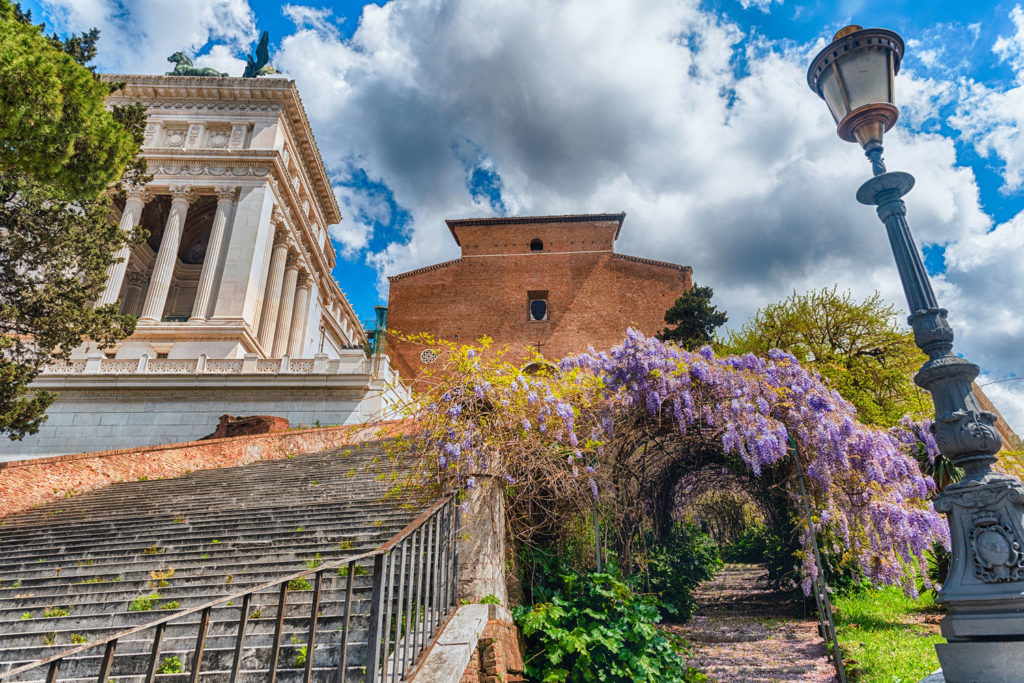
36. Santa Maria in Aracoeli
Santa Maria in Aracoeli is another hidden gem in Rome. This is a beautiful church on Capitoline Hill hidden behind an austere brick facade once covered with mosaics. Aracoeli means “altar of heaven.”
The original church dates from the 6th century. But the church you see today is from the 14th century. During the Middle Ages, the church was used as the meeting place for the Roman Senate.
Inside there’s a large nave with 22 ancient granite columns separating the aisles. According to an inscription, one column came from the House of Augustus on Palatine Hill.
The church is mostly known for its beautiful frescos by Pinturicchio, an early Renaissance artist. They’re located in the Chapel of Bernardino of Siena.
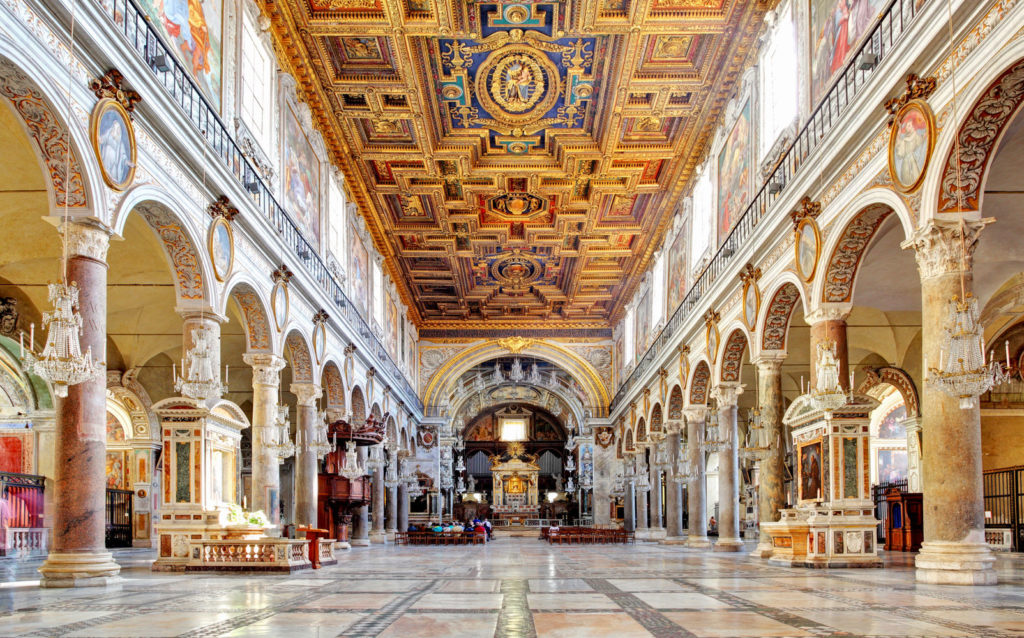
Pinturicchio completed the frescos in 1484 after he had decorated the papal apartments in the Vatican Museums. The frescos have grotesque motifs, based on ancient frescos that had just been discovered in Nero’s Golden House.
The church has a spectacular gilded wooden ceiling, dating from the 16th century. The ceiling commemorates the Christian Victory of Leptano over the muslims.
Other things to look for are the high altar with a Byzantine madonna icon, Bernini’s marble memorial to Pope Urban VIII, a tabernacle by Arnolfo di Cambio, and the tombstone by Donatello.
Address: Scala dell’Arce Capitolina, 12
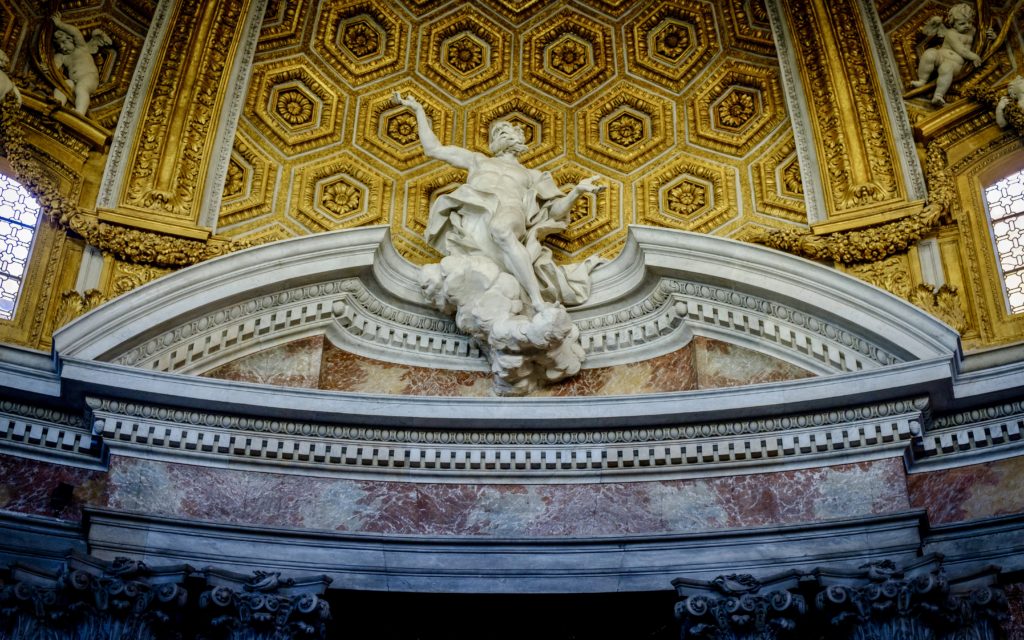
37. Sant’Andrea al Quirinale
Designed by Bernini in 1658, this hidden gem church in Rome was once known as the “Pearl of the Baroque.” Bernini used a giant order of architecture.
The whole body of the church is enclosed within giant pilasters. The entrance looks like a giant gateway rather than a church.
The interior has an oval form. It’s colorful because many different types of marble and stone were used.
Above the high altar Bernini designed and carved fictive figures and cherubs that seem to tumble from the sky, lit from a window above. It’s a theatrical ensemble.
The central painting in the altar is the Martyrdom of Saint Andrew. The painting is framed in the same marble as the pilasters enclosing the altar.
The dome above is made of white stucco and gold. In the center is a dove representing the Holy Spirit. It’s surrounded by white marble sculptures. Some of the figures appear to look down on us.
Address: Via del Quirinale, 30
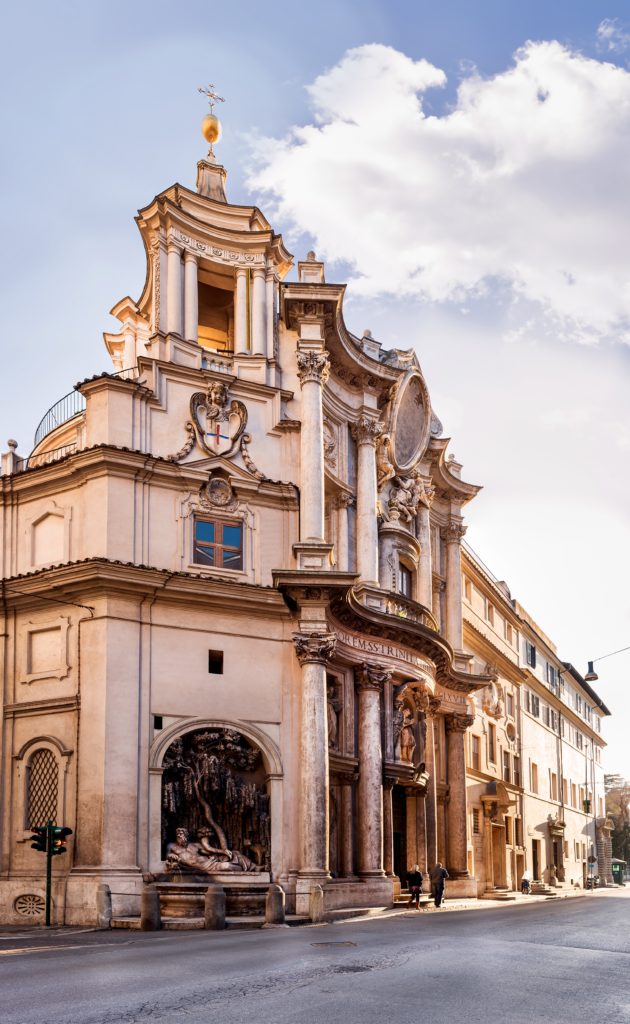
38. San Carlo alle Quattro Fontane
This is a magnificent tiny church designed by the Baroque architect Borromini. He received the commission from the Trinitarian order.
But they had very little money. So the church is made out of inexpensive materials like stucco.
The interior is rather unexpected and energetic. The curved walls seem to undulate and move in and out.
A rhythm is created by the columns. It’s the opposite of the stability you normally expect in architecture.
The dome is unusual too. It’s not a perfect hemisphere. It’s an oval, as is the shape of the church’s floor plan itself.
There are hexagons, crosses, and at the center is another oval. There’s a dove, which is the symbol of the Holy Spirit lit, lit by almost supernatural light.
Address: Via del Quirinale, 23

39. Santa Maria Della Vittoria’s Cornaro Chapel
This church houses one of Bernini’s most dramatic and startling sculptures, the Ecstasy of St. Teresa, in the Cornaro Chapel.
It depicts the moment when an angel pierces Saint Teresa’s heart with the golden arrow of divine love. St. Teresa wasn’t your average saint. She was a Spanish nun who had full body mystical visions.
The risqué sculpture is a complex ensemble, Bernini stagecraft at the height of his maximalism ethos. The sculpture hovers above in an elevated niche.
St. Teresa is on a cloud with golden rays of light pouring down on the moment of intense emotion. On the walls of the chapel, members of the Cornaro family gather in “theater boxes” to witness the divine moment.
But is it divine? A swooning St. Teresa’s mouth is open in rapture. Her head tilts back. Art historians have noted that Teresa even resembles Bernini’s love Costanza.
Scholars disagree about the exact nature of the saint’s “ecstasy.” Some believe the image is frankly erotic, depicting a sexual experience. Others think it just reflects divine passion.
Address: Via Venti Settembre, 17
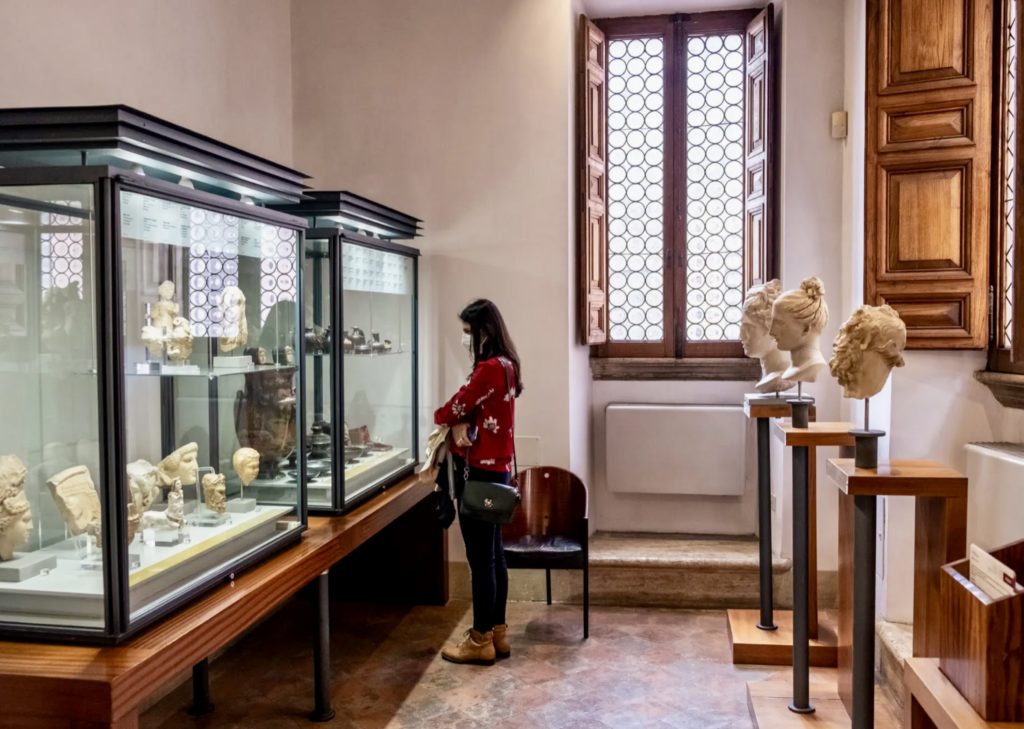
40. Giovanni Barracco Museum
If you’re a fan of ancient sculptures, the Giovanni Barracco Museum is another hidden gem in Rome that you should visit. It’s housed in a beautiful 16th century palace.
Located close to Campo de’ Fiori, it’s an intimate and free museum that has recently reopened.
Giovanni Barracco studied the classics at a young age and became enamored with ancient civilizations. He gave his collection to the city in 1902.
Barracco amassed a remarkable collection of antiquities, including works of Egyptian, Mesopotamian, Phoenician, and Etruscan art.
Address: Corso Vittorio Emanuele II, 166A
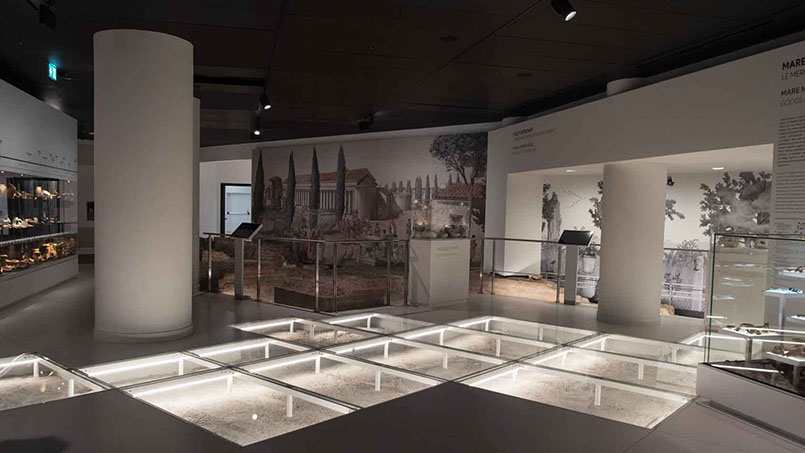
41. Ninfeo Museum
The Museo Ninfeo is a brand new archaeological museum in Rome, opened in November 2021. Right now, the museum is only open on the weekends.
It’s a chance to peak into the ruins of a former imperial hideaway and pleasure garden of the Roman Emperors. It was called a Nymphaeum, hence the name of the museum. The set up is superb.
Visitors view objects found at the excavation site as they walk over and through ancient structures. Over 100,000 pieces were discovered in the excavation. Around 3000 are on display.
You can see coins, bronze and glass objects, botanical finds, and Roman ruins.
Address: Piazza Vittorio Emanuele II, 78
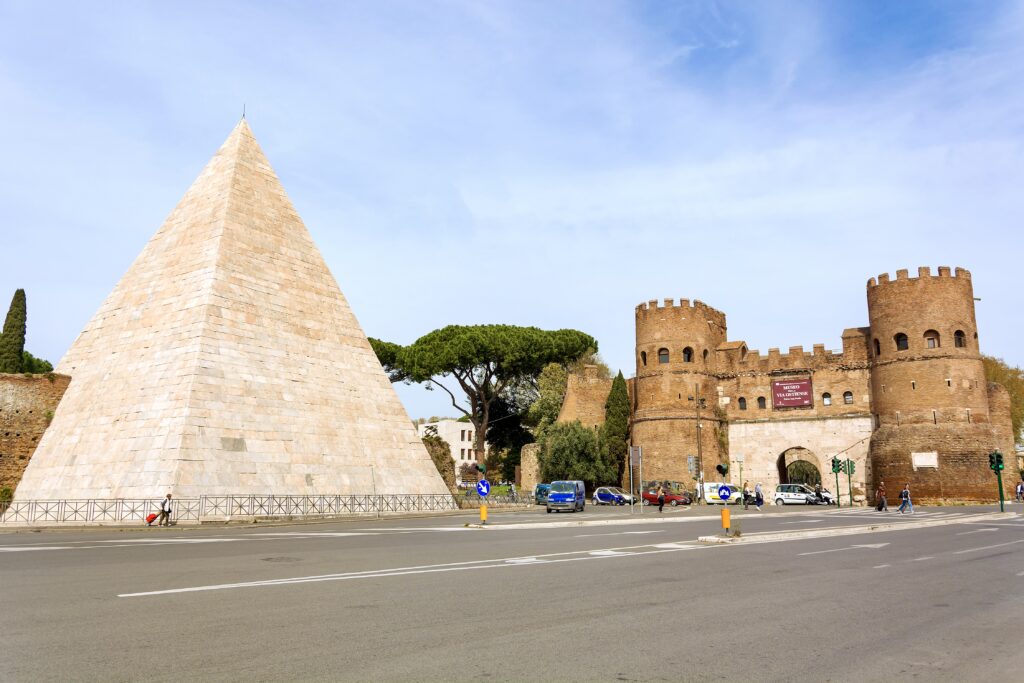
42. Testaccio Neighborhood
The Testaccio neighborhood in Rome is known for its vibrant food scene and rich history. It claims to be the place where Roman food was born. Yet, it’s still off the beaten path for most visitors to Rome.
For a true taste of Italy, you should stop by Mercato Testaccio, one of the oldest markets in Rome. It’s an indoor market where you can find fresh produce, meats, wines, and cheeses. You may also want to book a guided food tour of Testaccio to sample all the goodies.
There are some great things to do in Testaccio too. You can check out the Pyramid of Cestius.
It’s ancient Roman pyramid is located near the Porta San Paolo. Built around the 12 century B.C., it served as a tomb for a wealthy Roman. It’s very well-preserved and worth inspecting.
The Testaccio neighborhood is right on the banks of the River Tiber. So, it’s a great place for a stroll or bike ride.
Pro Tip: You can also book a 2.5 hour guided tour that includes both the market and the pyramid.
I hope you’ve enjoyed my guide to hidden gems in Rome. You may enjoy these other Rome travel guides and resources:
- 1 day themed Rome itineraries
- 3 day itinerary for Rome
- 5 day itinerary for Rome
- 10 day itinerary for Italy’s Classic Cities
- 11 ways to spend 1 week in Italy
- 10 day itinerary from Milan to Rome
- 1 week itinerary from Venice to Milan
- 30 beautiful towns in Italy
- 100+ Italy bucket list experiences
- Tips for visiting Italy
- Historic landmarks in Italy
If you’d like to visit Rome’s secret hidden gems and unusual sites, pin it for later.

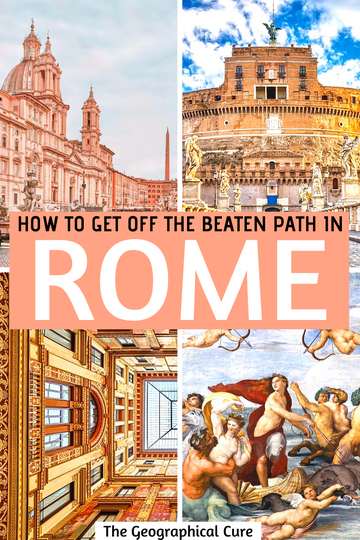
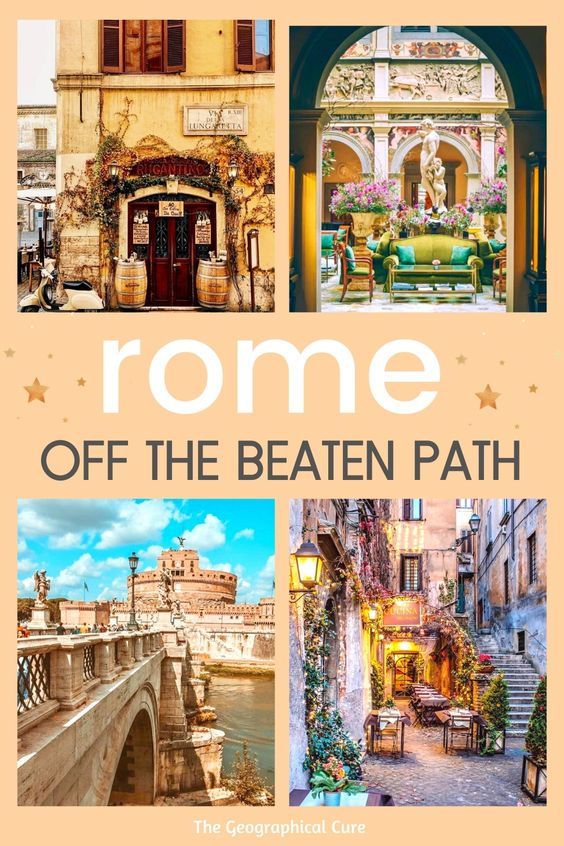
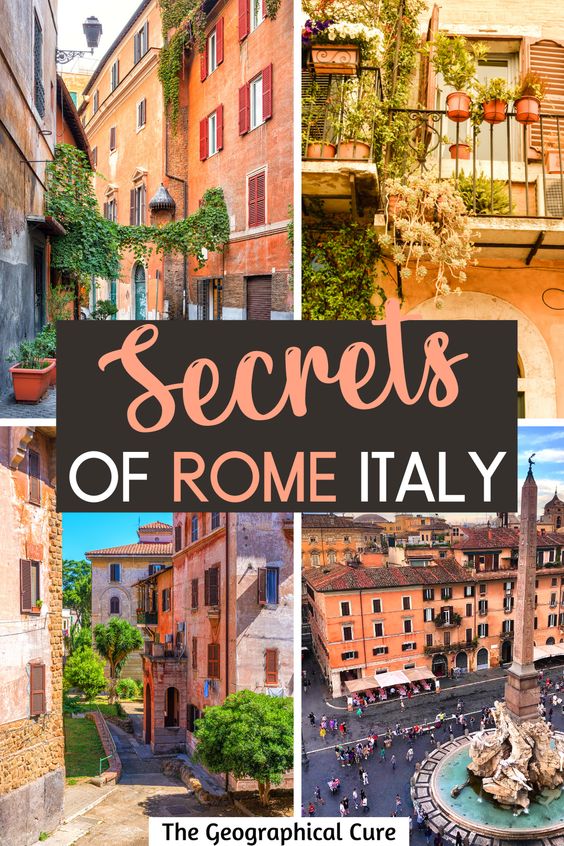
This is fantastic! I’ve been to Rome 10+ times and many of these are completely new to me. I’ll have a couple of days in Rome again this October and now have a terrific list of new things to explore. Thanks for the great work.
There’s even more I could add. Rome’s not even that big a city, but there are just so many things to do. Enjoy! Rome in October is splendid.
These are some amazing suggestions! I’ve been to Rome once, but I’m looking to make another trip next month. I already did all the obvious touristy things and want to dive a bit deeper on my next trip. Thanks for this!
Cheers!
Enjoy! There’s always more to do in Rome!
Great article. Amazing detailed article for Rome and totally interesting to read.
Thank you so much for taking the time to comment!
Wow! Thank you for all the insight and suggestions. Will be working this list for many future visits.
Have fun! There’s just so much to do in Rome and more things being discovered all the time.
Great suggestions. A wonderful list. Thank you!
You’re welcome! Enjoy Rome!
What a collections, thanks for sharing! I’ve been to Rome at least five times, always stayed with locals and have seen some of your suggestions. But I’ll send your list to my friends for our next explorations. I’m sure even Romans may not have discovered all of these gems!
There is simply just so much to see in Rome and new things are being excavated all the time. I can’t wait to go back to Rome again myself!